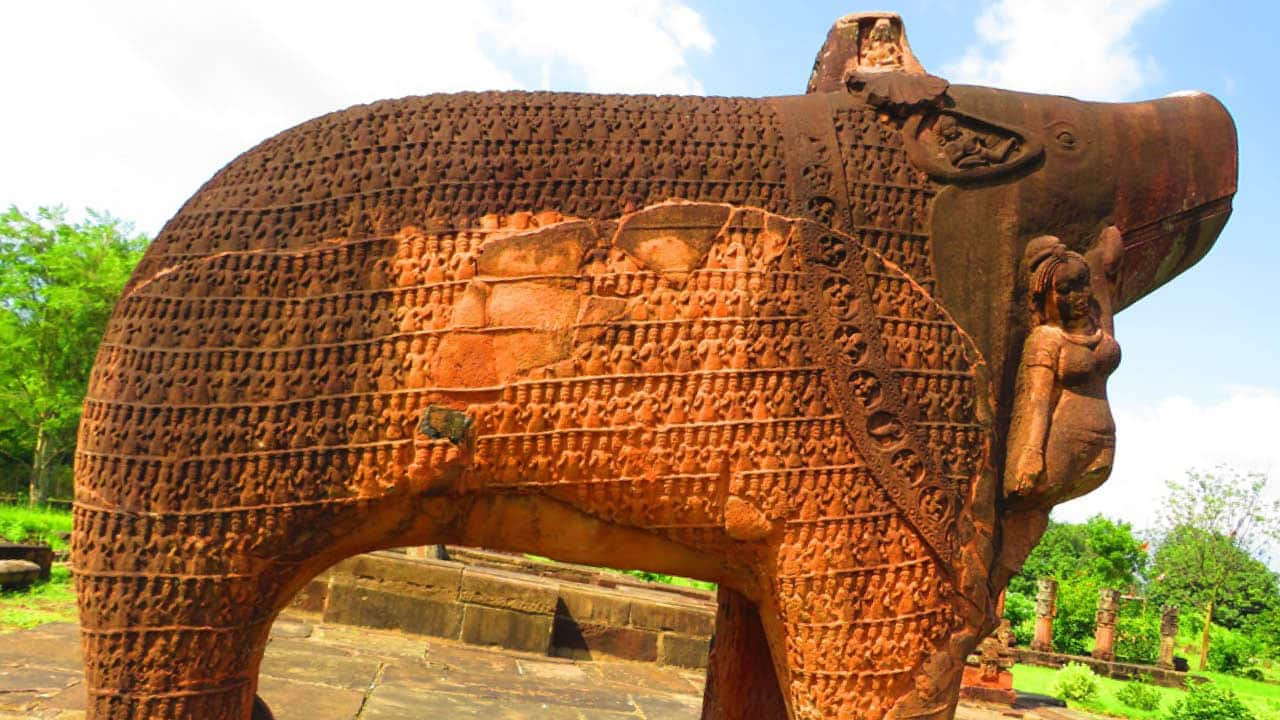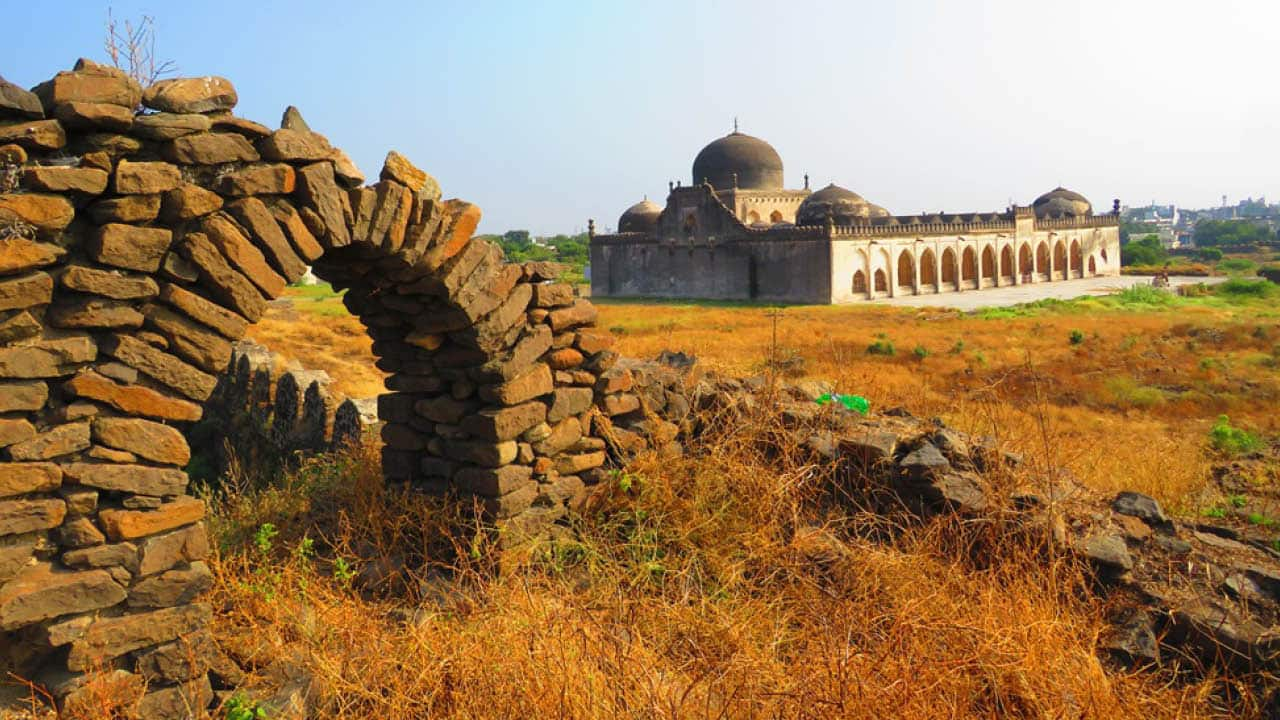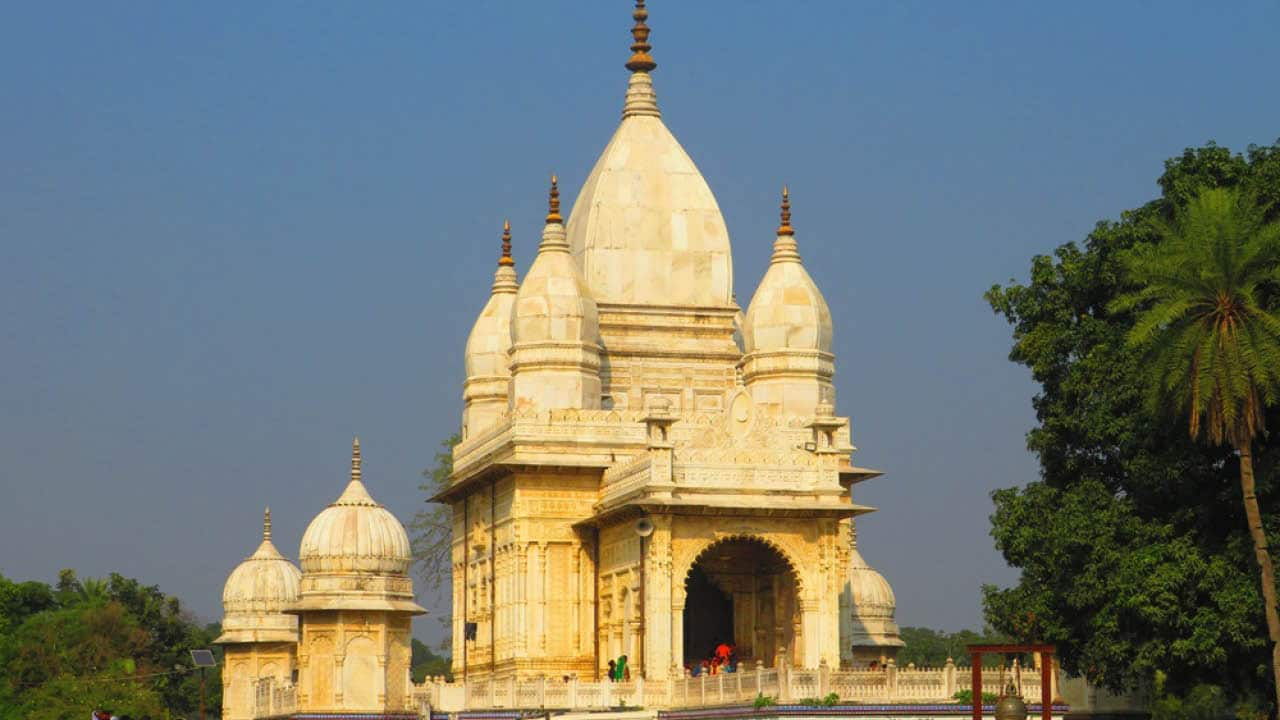



Eran: Located along the Bina River in Madhya Pradesh’s Sagar district, Eran is a tiny village. Fifteen centuries ago, it was ‘Airanaka’, a provincial capital within the Gupta Empire. Its name was derived from a form of medicinal grass named ‘Eraka’, which grows here.
This archaeologist’s delight has seen excavations from the mid-19th century to the immediate period. The result has been finding habitation levels for almost four millennia, from the Chalcolithic (1800 BCE) to the current time. The digs have unearthed remains of buildings, sculpted antiquities, inscriptions of various eras and over three thousand coins – including some of the oldest ever found in the subcontinent. Indeed, the coins here begin with the Mauryan period.

Eran’s focal point is a Vaishnava temple complex dominated by a giant Varaha figure, more than 11 feet high and 13 feet long. Carved on this 5th century CE icon are over a thousand sages, a Bhumidevi and musicians. On its tongue is a tiny carving of Saraswati and on the ground below is a depiction of ocean life, showcasing the mythological churning of the ocean. On the boar’s front is an inscription mentioning the Huna ruler Toramana, making it a repository of history.
Next to the Varaha is an even older Vishnu idol with a gateway in front, replete with iconography.
Eran was also a mint town: coins punch-marked with its motifs being found as far south as Coimbatore, indicating its importance. Adding another dimension to this veritable repository of Indian History is an inscription giving the earliest recorded instance of Sati.
Kalaburagi: Once a part of the Rashtrakuta and Chalukyan kingdoms, Kalaburagi – formerly known as Gulbarga - became the capital of the Bahmani Sultans in 1347. Lying in a fertile agricultural belt and in the middle of peninsular India’s busy trade routes enriched the kingdom. The result is seen in the form of a rich architectural legacy, a synergy of Dakhni and Persian styles.
 In 1432, the capital moved to Bidar. Later, the place became part of the kingdom of Bijapur. Still later, the entire region was annexed by the Mughal empire and Kalaburagi was reduced to a frontier outpost. In its heyday, a Sufi called Bande Nawaz established his spiritual order in the town and his vast dargah complex is now a pilgrim destination. Perhaps as a result of his mausoleum’s presence, the place soon began to resemble a vast necropolis with tombs being built thick and fast.
In 1432, the capital moved to Bidar. Later, the place became part of the kingdom of Bijapur. Still later, the entire region was annexed by the Mughal empire and Kalaburagi was reduced to a frontier outpost. In its heyday, a Sufi called Bande Nawaz established his spiritual order in the town and his vast dargah complex is now a pilgrim destination. Perhaps as a result of his mausoleum’s presence, the place soon began to resemble a vast necropolis with tombs being built thick and fast.
Even today, the town retains a medieval air. Tombs and mosques are everywhere, from inside residential areas to within markets. Many are abandoned, some even used by local children to play hide and seek. In fact, it is impossible to move anywhere in the town without spotting a tomb. The dargah complex of Bande Nawaz has several smaller tombs within and around. Not far away is a complex called the Haft Gumbad – a royal necropolis comprising tombs of Bahmani’s ruling family. There is even a state archaeological museum within two tombs.
In the heart of Kalaburagi is a 15th century fort. Its bastions are crumbling but within those mighty walls cannons still stand, including some whose fury was felt by invading forces. An elegant Jama Masjid is the best maintained structure, the call to prayer still drawing in people as it used to centuries ago.
Rajnagar: Darbhanga is today considered the cultural heartland of Bihar. At its peak, the ‘Darbhanga Raj’ was a ‘zamindari’ whose size and wealth outclassed most of India’s princely states. Its last ruler – Maharajadhiraj Sir Kameshwar Singh Goutam Bahadur - was the third richest man in India and his state encompassed nearly 4,000 square miles and hundreds of villages. His jewellery collection included a famed diamond necklace once owned by Marie Antoinette, the last queen of France. A ‘Darbhanga House’ existed not just in Patna but in Lutyens Delhi also. In 1884, Kameshwar’s father Maharaja Rameshwar Singh began building a new city 47 kilometres north of Darbhanga town. This was Rajnagar, a grand new administrative headquarters for a zamindari that vied to be a princely state. An Italian master architect, M.A. Corone, was in charge. Glorious palaces and grand temples were built, with ponds nearby. The fluted pillars and ornate cupolas indicated an attempt to mix Indian and European styles.
In 1884, Kameshwar’s father Maharaja Rameshwar Singh began building a new city 47 kilometres north of Darbhanga town. This was Rajnagar, a grand new administrative headquarters for a zamindari that vied to be a princely state. An Italian master architect, M.A. Corone, was in charge. Glorious palaces and grand temples were built, with ponds nearby. The fluted pillars and ornate cupolas indicated an attempt to mix Indian and European styles.
However, an Act of God ended the dream. The 1934 earthquake, measuring more than 8 on the Richter Scale, devastated Bihar and damaged Rajnagar’s buildings irreparably. With Rameshwar Singh having passed away five years earlier, priority for repair was given to Darbhanga town over Rajnagar. Today, the huge Naulakha Palace stands like a ghost from the past. Huge stone elephants flanking a palace gateway look trapped in time. A Kali Temple remains in worship, Madhubani paintings on its walls. A Kamakhya shrine lies within the camp of a security unit, guarding the nearby border with Nepal.
Eran, Kalaburagi and Rajnagar are three examples of countless heritage-filled cities in India that were once prominent but have now fallen off the tourist map. Such places may not have World Heritage status, but that does not prevent them from being repositories of our history.
Discover the latest Business News, Sensex, and Nifty updates. Obtain Personal Finance insights, tax queries, and expert opinions on Moneycontrol or download the Moneycontrol App to stay updated!
Find the best of Al News in one place, specially curated for you every weekend.
Stay on top of the latest tech trends and biggest startup news.